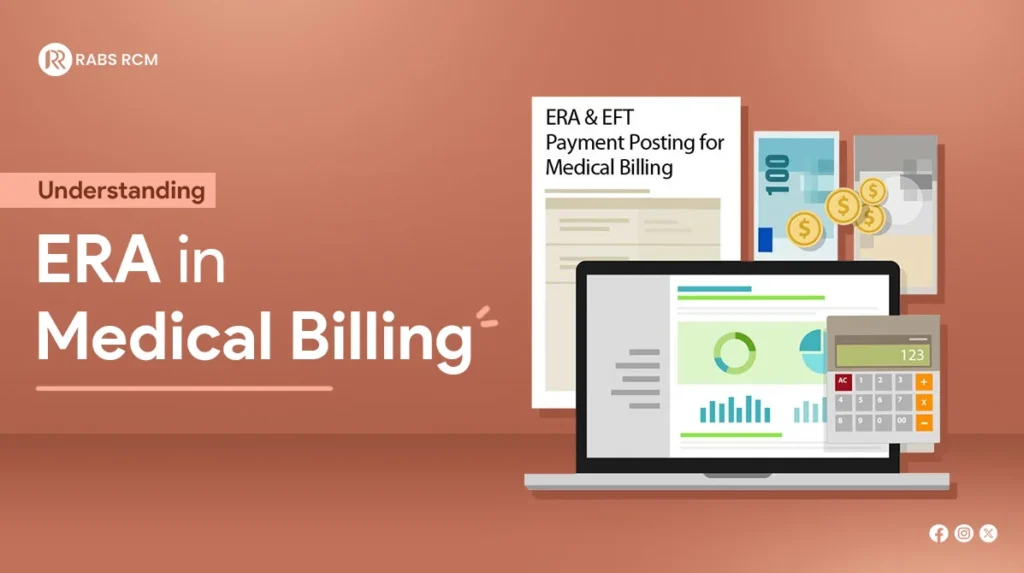
Understanding ERA in Medical Billing
In medical billing, the term “ERA” holds significant importance. ERA, or Electronic Remittance Advice, plays a pivotal role in streamlining the complex medical billing process, offering numerous advantages to healthcare providers, insurers, and patients alike.
Evolution of Medical Billing
Medical billing has come a long way from its traditional roots to our current digital era. Historically, medical billing involved cumbersome paperwork and manual processes. However, with the advent of technology, particularly the widespread adoption of electronic systems, the medical billing landscape has undergone a radical transformation.
Key Features of ERA
ERA, essentially an electronic version of a paper explanation of benefits (EOB), is a crucial tool in medical billing. It provides detailed information about claims processed by insurance companies, including payment decisions and reasons for denials. This electronic format enhances efficiency and accuracy in billing procedures.
How ERA Works in Medical Billing
The ERA process involves electronically transmitting payment information from insurers to healthcare providers. The insurer generates an ERA upon processing a claim, which is then sent to the provider’s designated system. This automated exchange of information expedites reimbursement and reduces the administrative burden associated with manual billing methods.
Advantages of ERA in Medical Billing
The implementation of ERA brings forth a plethora of benefits for healthcare providers. Firstly, it significantly enhances operational efficiency by accelerating the reimbursement cycle and reducing paperwork. Moreover, the automated nature of ERA minimizes errors and discrepancies in billing, thereby ensuring accurate claims processing.
Challenges and Limitations of ERA
Despite its advantages, ERA is not without its challenges. Technical issues like system compatibility and data integration pose significant hurdles during implementation. Moreover, concerns regarding compliance with regulatory standards, particularly HIPAA regulations, necessitate robust security measures to safeguard patient information.
Comparison Between ERA and Traditional Billing Methods
In comparison to traditional billing methods, ERA offers a host of advantages. It surpasses conventional methods in terms of efficiency, accuracy, and cost-effectiveness. The streamlined process facilitated by ERA translates into quicker reimbursement and reduced administrative overhead for healthcare providers.
Future Trends in Medical Billing ERA
Looking ahead, the future of medical billing lies in continued innovation and technological advancements. Emerging trends such as integrating AI and machine learning hold immense potential to optimize billing processes further and enhance overall efficiency in healthcare delivery.
Adoption and Implementation of ERA
Successful adoption of ERA requires careful planning and execution. Healthcare providers must invest in robust training programs to familiarize staff with the intricacies of electronic billing systems. Overcoming resistance to change and ensuring regulatory compliance are crucial to effective implementation.
Regulatory Compliance and Security Measures
Compliance with regulatory standards, particularly HIPAA regulations, is paramount in medical billing. Healthcare providers must adhere to stringent data protection measures to safeguard patient confidentiality and maintain trust in the healthcare system.
Training and Education on ERA
Comprehensive training and education are essential components of successful ERA implementation. Healthcare professionals need to be proficient in navigating electronic billing systems and understanding the intricacies of claims processing. Ongoing training programs ensure staff competency and optimize the benefits of ERA adoption.
Case Studies: Successful Implementation of ERA
Numerous case studies demonstrate the successful implementation of ERA in healthcare settings. Organizations have witnessed tangible benefits from large hospital systems to small medical practices, such as reduced administrative costs and improved billing accuracy following the transition to electronic remittance advice.
The Role of Technology in Shaping the Future of ERA
Technological advancements remain essential in molding the future of our era. Progress in AI and automation offers the potential to streamline billing procedures and elevate revenue cycle management within healthcare institutions. We ensure ongoing enhancement and alignment with ever-changing industry benchmarks by incorporating cutting-edge technologies.
Benefits for Patients
Patients also stand to benefit from the widespread adoption of ERA in medical billing. Enhanced transparency in billing practices fosters trust and confidence among patients. Moreover, reducing errors and discrepancies leads to smoother claims processing and timely reimbursement, ultimately improving the patient experience.
Conclusion
In conclusion, ERA represents a significant milestone in the evolution of medical billing. Its adoption heralds a new era of efficiency, accuracy, and transparency in healthcare finance. By embracing technological innovation and prioritizing regulatory compliance, healthcare providers can harness the full potential of ERA to optimize billing processes and deliver superior patient care.

